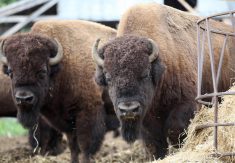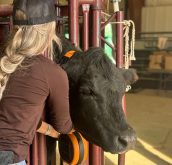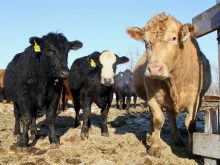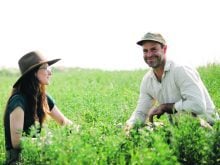Recent tools are helping the bison sector manage its genetic diversity
Glacier FarmMedia – When a cattle producer wants to diversify the herd, there are many breed choices. For bison producers, the pickings are slim.
Canadian bison producers can draw from only two genetic wells: Wood bison and Plains bison. Efforts are ongoing to bolster biodiversity and protect some genetic lines.
“Everyone assumed that there was very little genetic diversity in bison, because of the genetic bottleneck that happened in the 1880s when they just about went extinct,” said Merek Wigness, vice-president of the Saskatchewan Bison Association and the provincial industry’s voice on the Canadian Bison Association board.
Read Also

House ag committee to undertake several studies
The House of Commons standing agriculture committee has set its agenda for the coming months. Members began the fall sitting with a two-hour update on international trade
However, bison producers are discovering there is more genetic diversity than previously thought.
Wigness has become a go-to bison genetics expert. He has participated in multiple Canadian Bison Association committees that deal with conservation, pedigree and research. His background is in biology, albeit in plant research and gene manipulation.
Most genetic diversity comes from the many Plains-Wood crosses that permeate the industry, he noted.
Pure Wood bison genetics can be traced to a core population in Wood Buffalo National Park, while Plains genes have several originating points. As the names suggest, Plains bison are more adapted to open grasslands, while Wood bison are tailored for the forested northern climate of the Alberta-Northwest Territory border.
As bison shifted to modern livestock rather than wildlife, crosses became more popular. Today, those crosses represent the most popular choice for bison operations, said Wigness.That is partlydue to production advantages. Crossbreds can be slightly bigger, with traits to better suit farm conditions and producer priorities. There is also a limited source of pure genetics, he added.
“There’s no hard scientific data done to quantify the hybrid vigour on the Wood-Plains cross (but) I’m 99 per cent sure that’s what’s going on, is there’s some hybrid vigour on the cross.”
Wigness worries about loss of pure Plains and Wood bison genes because there are implications for the future of the species. Pure founding populations are a necessity for healthy animals and ongoing genetic diversity and to provide a better foundation for those pursuing hybrid vigour.
There is also a small number of producers who want to keep the “wildness” in bison, he said. Maintaining pure wild genes and limiting human selection interference is prioritized in that philosophy.
There are 21 breeders of purebred Plains bison and six well-established purebred Wood bison breeders registered with the Canadian Bison Association. Each has had to back their claims through genetic testing and documentation of their herds’ pedigrees.
That’s a relatively new innovation, said Wigness.
“It was getting hard. You didn’t really know, especially on the Plains side, it was hard to know if an animal was pure Plains or if was a low percentage Woods cross because there was just poor record keeping.”
Seven years ago, the national bison association partnered with traceability company Neogen to develop genetic tests to impose more order on the situation. Those tests used 10,000 genetic markers and were made available to producers in April 2021.
Results showed the breakdown of an animal’s parentage between the two bison types, with a three per cent margin for error, as well as any cattle genetics that might have crept into the breed.
It was a game changer for the industry, Wigness said. Since then, the tests have become a major resource for bison producers, especially those breeding for genetic purity.
Programs for bison populations in North America’s national parks have also emerged. Those herds, providing reservoirs of pure genetics with less human interference, are of considerable interest for breeders. Canada’s Wood Buffalo National Park claims half of the world’s wild Wood bison.
Some parks sell bison to ranches, but disease issues such as bovine tuberculosis and brucellosis limit access. Yellowstone National Park in the United States sets out a four-year quarantine program for the animals, with continuous testing. Once quarantine is complete, the animal can be released for purchase.
A project at the Western College of Veterinary Medicine may help address that barrier. Project BIG (Bison Integrated Genomics) aims to eliminate diseases of concern via vaccination. It also involves transferring germplasm across different bison populations to create healthier, more disease resistant future generations.
Wigness anticipates that purebred genetics may bring a premium in the future, but the cross is still king.
“A lot of the animals in the show circuit are crosses and those would be the most expensive animals,” he said, adding that what wins at the show and what wins at the commercial auction are often linked.
Those who want purebred genetics will seek them out but the market is smaller. Wigness said his own ranch is often contacted by those looking for pure Plains genetics.


















